03.The ghost works that oil paid to the powerful
The payment Petrocaribe made for inexistent infrastructure filled up the pockets of at least three Presidents, several senators, and wealthy corporate groups in the region. The plan to rebuild Haiti after the devastating 2010 earthquake is the best sample of how corruption wounded twice citizenships who placed their hopes in these funds.
A youngster crosses in a rush busy Haiti National Route Two pushing a wheelbarrow with some ice blocks. He risks his life every day in order to keep fresh the fish sold on the sidewalk of the busy street. On the other side, Monzus Senatus, waits for him; he is a tall man who has been selling fish for almost seven years on the narrow sidewalk since he was displaced, along with his colleagues, from old Fontamara market. The authorities demolished the facilities to build a new market that has not been finished yet.
The wheelbarrow pusher is lucky to make it alive to the other side. Frequently, vehicles have run pedestrians over. The last one took place in March 2018. Fish peddlers protested along the community asking for the new market to be finished at once, just like every time a community member is run over, to no avail. "We have not been able to talk to any authority and we do not know whom to talk to, actually", complains Senatus. There is the unfinished concrete mass behind that line of fish peddlers who, since 2012, have been living with the threat of cars coming in and out of Port au Prince. On the third level of the structure, interlocked steel bars hang amid nails, debris, and animal feces, resembling the skeleton of an inexistent roof.
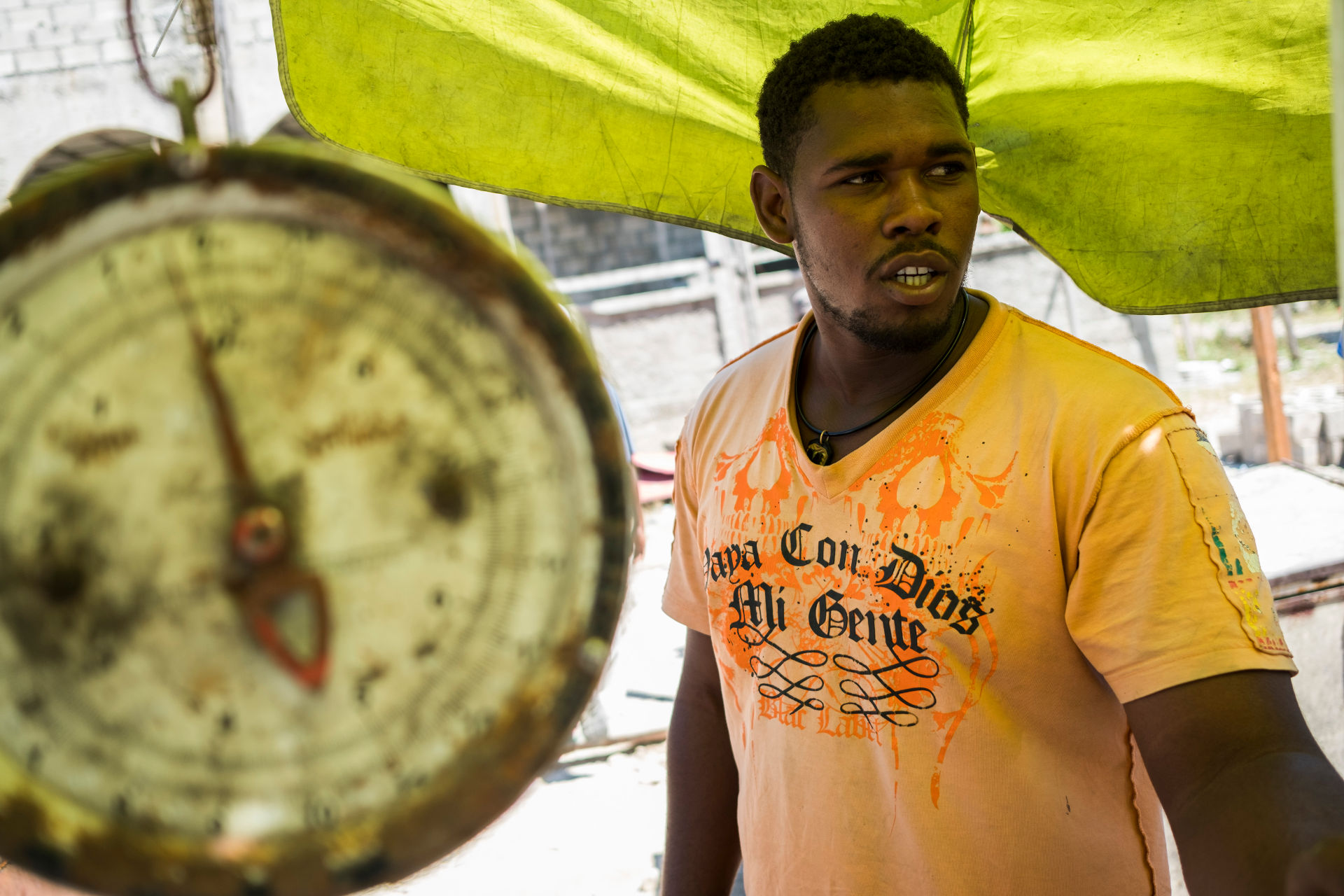
Monzus Senatus is one of the salesmen whom now has its position at risk in Fontamara / DENNIS RIVERA, DIARIO LIBRE REPÚBLICA DOMINICANA
Fontamara market is one of the 130 projects planned in that country with Petrocaribe funds, the oil sale energy agreement with preferential credit promoted by Venezuelan Government. Haiti national reconstruction, after the mighty earthquake that devastated the country in 2010 with over 300,000 casualties, 1.5 million homeless, and a collapsed country infrastructure, including the demolished old market, depended mostly from these resources. The South American nation has provided 3.8 billion dollars as part of the cooperation program, but from the total, 2.1 billion dollars were contributed by Haitian governments to execute the infrastructure plan. The initiative became a source of fraud that has disappointed Haitian population encouraging it to promote social media campaigns and street protests, asking to punish crooked politicians. In 2018, picket lines left behind seven casualties, dozens injured, and a Haitian government crisis.
#Petrofraude investigation reveals that with Venezuelan funds, President Jovenel Moïse’s and Dominican Senator Félix Bautista’s businesses were benefited, along corporate groups and families close to power throughout the Spanish island. Millionaire figures to relieve the aftermath of a disaster in the poorest country in Latin America ended in overpriced contracts, in offshore bank accounts, in constructions that had nothing to do with the earthquake, and in unfinished infrastructure. The money path also points out to Leonel Fernández’s social work, a Dominican Republic former president, and to the financing of political campaigns, like Michel Martelly, who was elected in Haiti in 2011, and Alejandro Toledo, former Peruvian president who tried to regain power in this year’s election
Journalists in this investigation visited a dozen projects financed with Petrocaribe’s money in Haiti to verify their progress, used drones to capture images of some of them, analyzed three audits conducted by Senate and Account Court in that country, reviewed legal suits against public servants for embezzlement and examined accounting information to rebuild the highest fraud with infrastructure projects financed by Petrocaribe ever documented in the region.
The energy platform promoted at least 234 projects and programs in the member countries, including oil, electrical, seaport, airport, and urban projects, according to an inventory conducted by this investigation. According to Petrocaribe 2015 performance report, investments even boosted the construction GDP of the member countries. The most expensive project would be Complejo Refinador Supremo Sueño de Bolívar in Nicaragua, requiring over 4.1 billion dollars, according to official reports. The project, however, was started but never ended. Haiti infrastructure plan takes second place, but contrary to what happened in Nicaragua, failed results in that country outraged the community pushing institutions to offer some sort of response to fraud.
None of the evidence that cause restlessness was significant for Venezuelan authorities in charge of the agreement. Mary Barton-Dock, representative of the World Bank in the Caribbean Country, requested a public statement in 2013 from the Haitian Government addressing Petrocaribe fund corruption. Pedro Canino González, Venezuelan Ambassador then, promptly contradicted her and stated the execution was transparent and that President Nicolás Maduro was “really pleased” with the performance of the agreement funds.
In April 2014, Michel Martelly, Haitian President then, stated something that condemned his administration: "I am going to give some bad news. we have been working so much around the country that the state coffers are penniless”. Almost a year later, Rafael Ramírez, Foreign Minister and Petróleos de Venezuela (PDVSA) – the company that supplies oil in the region – former president, visited Haiti and, according to Le Nouvelliste newspaper, was pleased to verify that “Petrocaribe agreement projects are consistent with the ideals advocated by the Venezuelan Government”.
Senator Yourie Latortue, who audited mid 2016 from Senate Ethics and Corruption Commission, pointed out in an interview for this project that being pleased with the way money was being invested was always the common standard for Venezuelan public servants who visited Haiti to oversee the cooperation execution, but it is false. “We would like those who embezzled the money to be judged and to be forced to return it to the Haitian State to be invested as it was supposed to”, stated Latortue.
In 2017, Haitian Senate audited 1.6 billion dollars of that Venezuelan cooperation and verified bid formalities were breached, contracts were forged for irregularity coverup or to inflate construction prices, funds were illegally cancelled and embezzled to other projects, millionaire contracts were granted to recently founded companies who received huge down payments without even having submitted feasibility studies.
The report, led by Senator Evallière Beauplan, was even more thorough than Latortue’s. in over 600 pages, the Parliament commission not only analyzed the way emergency resolutions were authorized, but listed each private company and public institution that participated and performed the reconstruction contracts, the amounts disbursed, and the condition projects that received resources were in; as Senate instance set forth: “It was full of irregularities, embezzlement, and prevarication” that did not protect the Haitian State.
Both Latortue’s and Beauplan’s audits analyzed the 15 emergency resolutions Haitian governments had authorized to promptly use Petrocaribe’s money and the way each contract was granted to each company. Two presidents and six Prime Ministers, as well as public servants from other institutions, were under Parliament’s magnifying glass. Nepotism indictments, systematic violation of the law, illegal enrichment, embezzlement, extortion, and fraud however, have been led to former Prime Ministers Jean Max Bellerive y Laurent Lamothe, and to Michael Lecorps, former President of the Development Foreign Cooperation Monetization Bureau (BMPAD). They have denied all charges pointing out that those indictments are groundless.
“Petro Ciao”
Mid-August in Port au Prince street and in other Haitian cities appeared signs saying “Kot kòb Petrocaribe a?” (Where did Petrocaribe’s money go?). Haitian community claims have grown little by little and the case has gone beyond official audits stopped by political interests and beyond civil suits trapped by court bureaucracy. They have gone through social medial under #PetrocaribeChallenge hashtag where Haitian citizens claim the millionaire disappearance of resources from the Venezuelan cooperation and it has gone out into the streets, as well. Last August 24, hundreds of people went out to protest against Petrocaribe squandering and corruption, marching to Account Chamber headquarters in Port au Prince, singing “Petro Ciao”, an adaptation of “Bella Ciao”, the famous Italian anti-fascist resistance hymn: “Money has been spent, we don’t know where, yet. Petro Ciao, Petro Ciao, Petro Ciao, Ciao, Ciao. Money has been spent, we don’t know where, yet. We want every thief to be arrested”, protesters sang.
Ever since, protests have taken place in the streets around the country. Last October 17, protests became violent, after the incidents, President Moïse promised a thorough investigation, dismissed Wilson Laleau, the Chief of Staff, and 16 of his advisors, whose names were linked to the audits on Petrocaribe resource uses. At the end of the month, Jean-Henry Céant, Haiti First Minister, announced the creation of a commission to investigate #Petrofraude chapter and invited every sector around the country to participate but civil groups that promote protest reject the official initiative, insisting responsible parties must be sentenced.
Haitian authorities have taken years following the lead of the money Martelly himself acknowledged has disappeared. Parliament tracking was joined by a United States investigation – already in progress – under the presumption that Petrocaribe resources involved in corruption and money laundering may have gone through the North American financial system. One of the consequences of that enquiry took place in June 2018, when the United States Treasury Department enacted Dominican Senator Félix Bautista under Global Magnitsky Act.
The member of the parliament for the Dominican Liberation Party (PLD) has been one of the most benefited with Petrocaribe contracts in Haiti and, according to American authorities, has used “connections to be granted public contracts” to rebuild that country. The Office for Foreign Asset Control (OFAC) froze his accounts as well as accounts from some companies related to the Haitian contracts: Constructora Hadom S.A., Soluciones Eléctricas Mecánicas Hadom S.R.L., Seymeh Ingenieria SRL, Inmobiliaria Rofi S.A., and Constructora Rofi S.A., and banned American companies from doing businesses with those companies. In addition to it, Bautista, his wife, and children are no longer welcome in American territory.
Bautista has been a member of PLD for over 30 years and has been one of the closest officers to Dominican former president Leonel Fernández. Thanks to his support, he led State Infrastructure Supervisor Engineer Office (OISOE), a public body in charge of auditing state infrastructure work. He was there twice, 1996 – 2000 and 2004 – 2010, both times appointed by Fernández, who took the Dominican Republic to be a member of Petrocaribe and has been a political figure upon whom late Hugo Chávez, the mastermind of the energy agreement, and Maduro have trusted amid complex circumstances for Venezuelan governors. Fernández, for instance, helped solving the diplomatic crisis in 2008 between Venezuela, Colombia, and Ecuador caused by a Colombian guerrilla leader murder in Ecuadorian territory that blew war winds. In 2017, he accompanied a dialogue between the opposition and current Venezuelan President who was undergoing one of his worst political moments fenced off by protests asking him to abdicate.
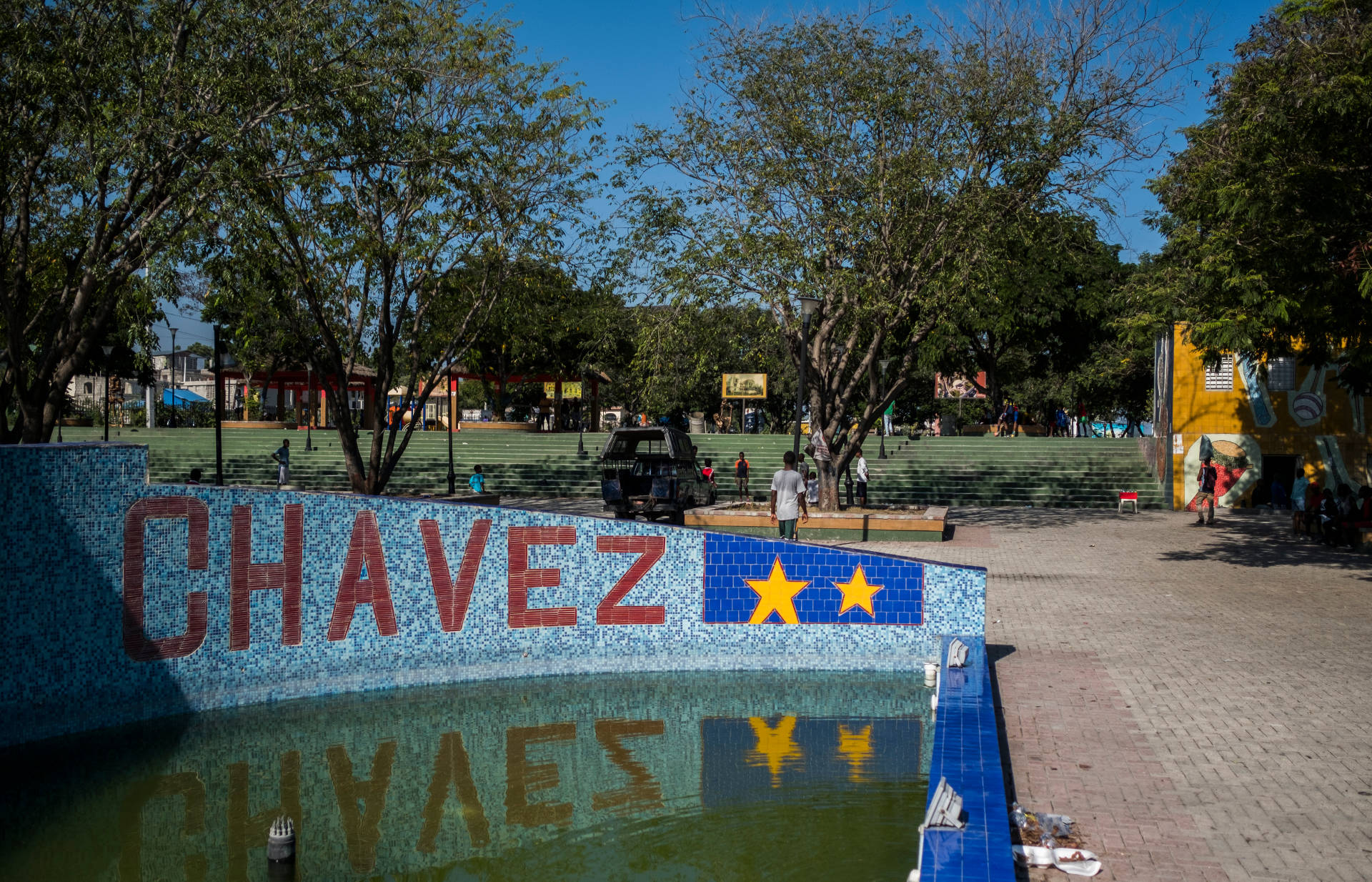
Hugo Chávez Square in Port-au-Prince includes sports facilities / DENNIS RIVERA, DIARIO LIBRE REPÚBLICA DOMINICANA
Fernández’s allied parliament accounts have been under supervision for years and have been submitted to legal processes without legal consequences, so far. In October 2014, Francisco Domínguez Brito, Dominican Republic Attorney General then, filed yet another indictment against Bautista pointing out, along several partners of his, that he became illegally enriched while at OISOE. The former Attorney General spoke about “complex financial movements” that proved Batista’s money laundering and corruption supported by six officers and family members close to him. That indictment filed by the Attorney General disclosed the Senator’s bank movements in the Dominican Republic pointing out that between July 2011 and December 2012 he started an unusual term-deposit acquisition totaling 3.7 million dollars. That investigation was filed by the Dominican legal system in October 2015 because the evidence the indictment was based on had been obtained without the authorization of a judge.
When Bautista was leaving OISOE to become senator, he was granted his first public contract to rebuild Haiti. It was not Petrocaribe’s money yet, though, but a donation from a university to the Haitian government by Fernández’s administration, granted to Constructora Mar S.A., linked to Bautista.
Between 2010 and 2011, as senator, three of his companies were granted by the government with contracts for 348 million dollars for the Legislative Palace and Bowenfield and Fort National residential developments reconstruction. A copy of an accounting report attributed to Bautista by the case investigators was examined by this journalist investigation of #Petrofraude. According to the document, formerly disclosed to Dominican media, in late December 2011 the new senator had received in bank accounts linked to him a total of 68.5 million dollars, not only for the Legislative Palace and Bowenfield and Fort National residential developments reconstruction, but also for La Saline drainage system and Morné a Cabri residential complex. The document shows that almost one third of that money flew to the other side of the island, the Dominican Republic, through banking wire transfers to five companies owned by the member of the parliament or by his close associates.
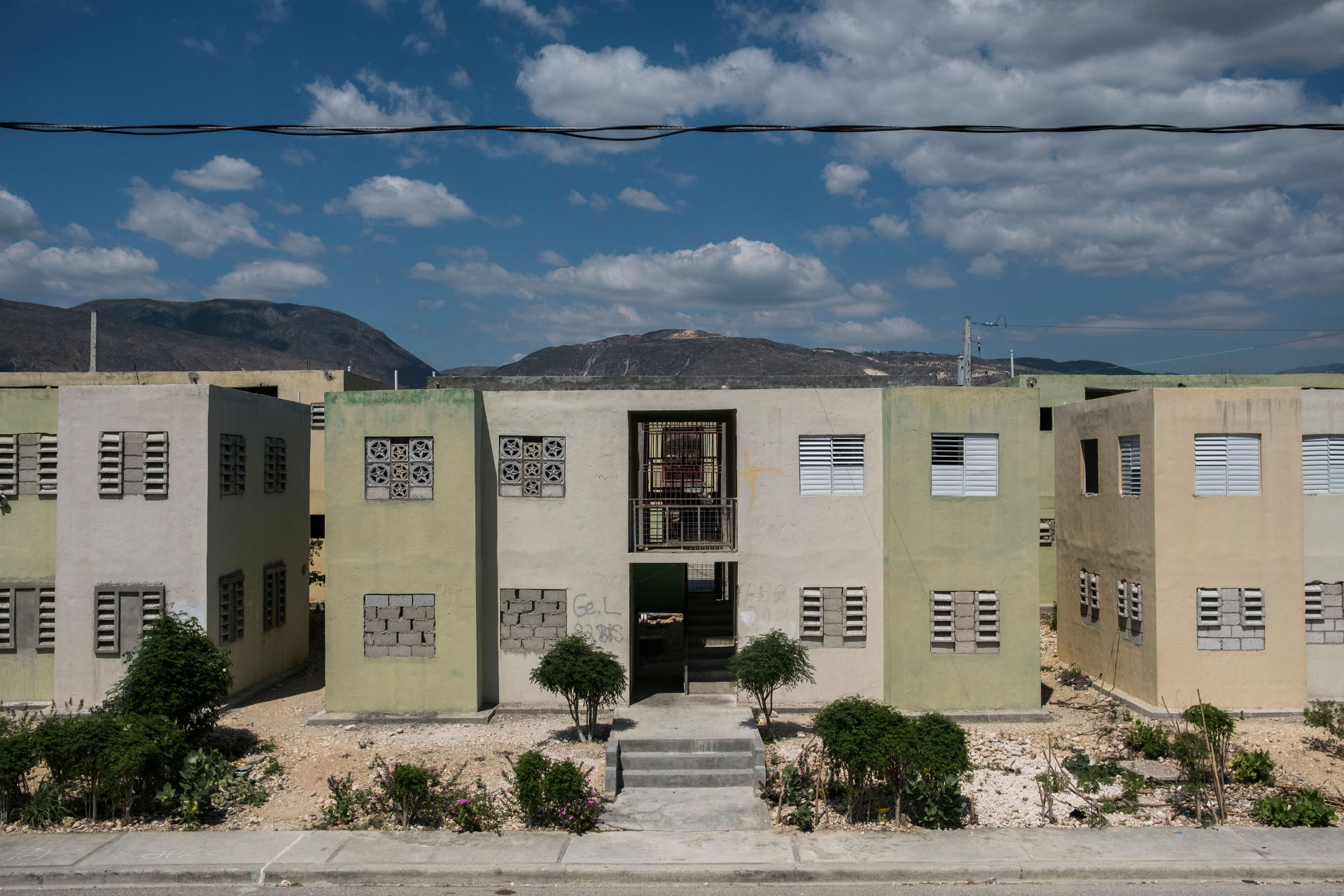
Morné a Cabri would be a complex of 3,000 homes and an industrial park, but it was not concluded / DENNIS RIVERA, DIARIO LIBRE REPÚBLICA DOMINICANA
The Haitian senate report reveals that neither Hadom nor Construcciones y Diseños R.M.N.S.A. had been authorized to develop any project whatsoever in that country because it did not have the five years of experience demanded by the Haitian law to be granted public contracts. Nevertheless, it did not keep the Haitian Government from René Preval administration back then, to disburse 10 million dollars in November 2010 as a down payment of 33.76 million for the reconstruction of the Legislative Palace, collapsed by the earthquake. As of today, the parliament headquarters still a pile of debris, undergrowth, and a car parking lot. The Haitian legislative power still meets at a prebuilt building, temporarily built after the earthquake on Port au Prince La Saline avenue. “Ten million dollars were handed over to Bautista, and nothing has been done”, regretted Latortue.
In the meantime, Bowenfield, an ambitious residential and urban renovation project in Port au Prince, still an idea under plans. In a visit, journalists working for this investigation verified this project lot is still several square kilometers filled with debris and undergrowth. On a huge lot where the residential buildings should have been built, only a Red Cross shelter built to house disabled people after the 2010 earthquake still stands. They are still there, in insecure zinc shacks built on dirt, without electricity, fresh water, sewerage, or trash collection, and with a community water tank. The only thing that changes is the number of dwellers: Since the Red Cross left and no other international aid organization took over the shelter, family members moved in with them. It used to be a 378-dweller community; now it is over 4,000 with a growing infant population without utilities or schools that spend the days playing on the dusty and muddy streets.
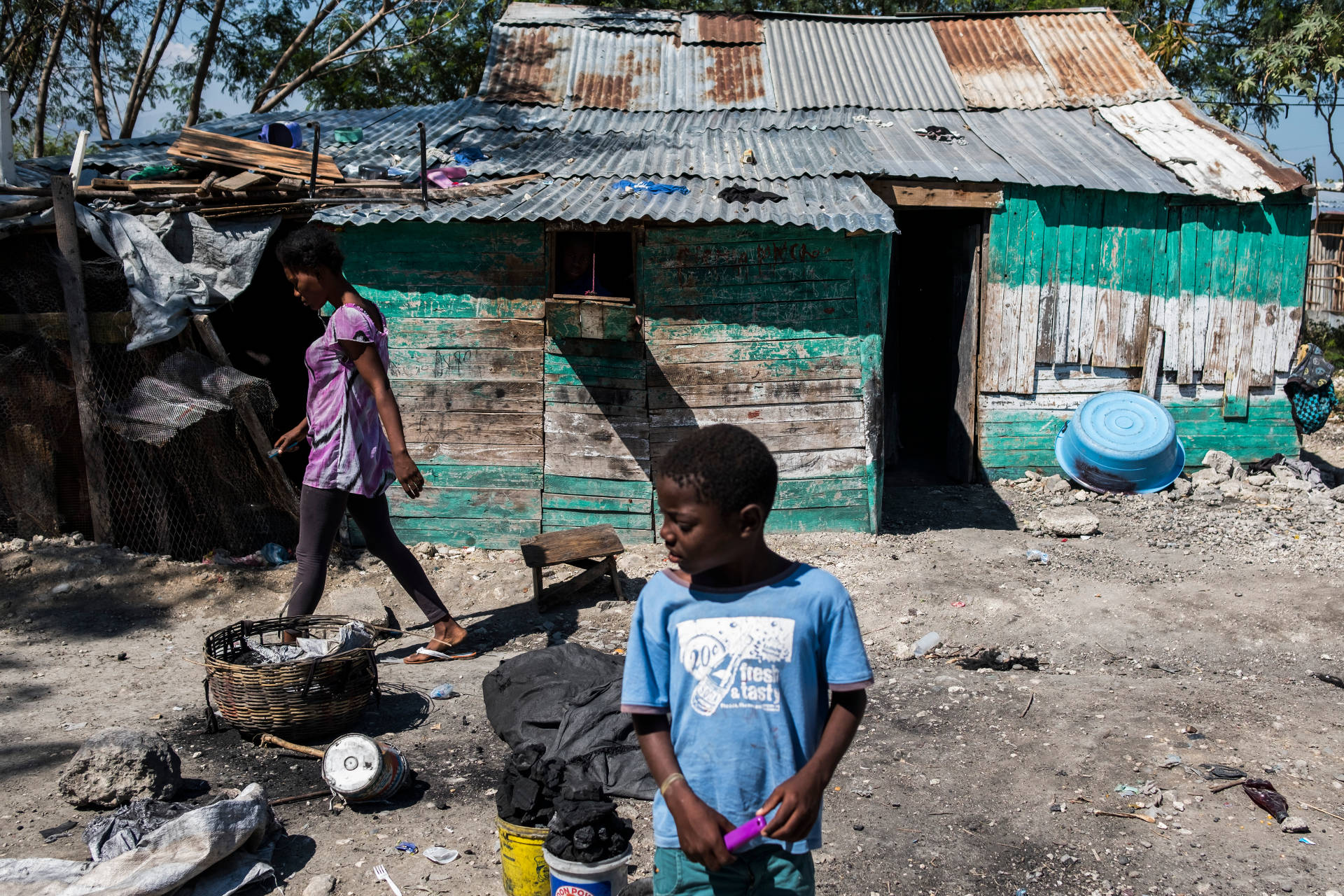
In the land where the Bowenfield urban complex would be built, there is still a shelter built after the 2010 earthquake / DENNIS RIVERA, DIARIO LIBRE REPÚBLICA DOMINICANA
Fort National, another huge housing development in Port au Prince, partially destroyed by the earthquake, was assumed and finished by the United Nations (UN) – United Nations Office Project Services (UNOPS), not by the Dominican senator company that was awarded the contract. Why? Despite that R.M.N. and Constructora Rofi (Bautista’s companies) were awarded to build Bowenfield and Fort National, when Martelly became the President of Haiti, he reassigned the funds of those two projects to Morne a Cabri, another huge 3,000 housing unit development in the outskirts of Port au Prince that would include an industrial park.

The inhabitants of Morné a Cabri live in austere apartments / DENNIS RIVERA, DIARIO LIBRE REPÚBLICA DOMINICANA
Constructions there are contrasting. The first stage was completed, but the remaining ones are half-built. Residents improvised windows or left the naked holes already built and hooked electrical connections from nearby utility poles in order to have light, at least.
Lumeine Sanon has been a dweller for two years of a stark unfinished apartment at Morne a Cabrï. It is a very small two-room apartment, a kitchen filled with multicolor plates and glasses that do not match each other; there is no refrigerator or stove where cooking is done with coal. The bathroom is a space that has no toilet and a pipe end that has never seen a drop of water. Lumeine feels embarrassed to say that the shower drain is his latrine.
The Handover
The accounting documents attributed to Bautista, indicate that between March 3 and May 11, 2011, presidential candidate Mirlande Manigat received 550,000 dollars from the senator as contribution to her campaign, an operation she admitted two years later. The other candidate, Michel Martelly, who became the President of Haiti between 2011 and 2016, received cash payments for about 1.75 million dollars for his campaign, although he has always denied it. The route of Batista’s transactions has been followed for other perspectives. In a legal suit submitted by political leader Guillermo Moreno in 2013, it is claimed that from accounts linked to the senator, wire transfers were made to Inversiones Corporativas for 468,000 dollars in May 2011. The destination was Fundación Global y Desarrollo (FUNGLODE), a non-profit organization owned by the president then, Leonel Fernández. The legal suit was dismissed that same year because the legal system considered that it was not possible to charge certain conducts “the Dominican legislation has not typified and consequently does not sanction” according to the National District Prosecutor’s Office order. Our team tried to talk to former president Fernández, but his Communications Direction Department rejected any possibility to speak about the subject.

US$ 3.118.000
Documents indicate that Senator Bautista would have donated more than three million dollars to politicians throughout the region.
The accounting report we learned about through #Petrofraude also reflects money wire transfers from the Haitian senator to Peru and Guatemala dated May 28, 2011 for 200,000 dollars – Guatemala – and 150,000 dollars – Peru. That was the same year the Dominican justice dismissed Moreno’s indictment against Bautista; the name of the senator appeared in an investigation for alleged illegal contributions to the 2011 Peruvian presidential campaign benefitting Alejandro Toledo, presidential candidate for Perú Posible who had already governed the country between 2001 and 2006. According to the media, some financing paths were via wire transfers to companies linked to the Dominican parliament member, such as Inmobiliaria Hemisferio and Constructora Infepre. Bautista admitted so and said there was financing during the campaign but that the contribution was not for Toledo, but for Perú Posible and that there were no legal limits to do it.
In the Guatemalan case, Bautista’s name popped out in January 2017, amid the international fuss for Odebrecht bribes. The Special Prosecutor’s Office investigation against Impunity in Guatemala linked him to the vice-president of that country, Roxanna Baldetti, but the senator spoke to Dominican media saying that he had wanted to start a building company in the Central American country, but he never did.
The Origin of a Fortune
Bautista’s are not the only Dominican companies benefited in Haiti with public contracts with Petrocaribe resources. New roads, old road reconstruction, schools, hospitals, and markets throughout the country were some of the infrastructure granted to companies and businessmen at the other side of La Española island that never complied with the least Haitian law requirements, according to audits.
Fraud hides throughout Haiti behind red fences. Haitian governments decided to cover up incompliance of hundreds of projects financed by Petrocaribe behind metal walls, so common in Haitian life that in that country, whoever promises something and does not deliver, is commonly called “tòl wouj” (red fence, in creole).
The one that covers Fontamara fish market is one of the few that allows seeing the unfinished project from the outside. The new market would cost 15.6 million dollars, but the project is paralyzed. Haitian authorities disbursed eight million dollars, according to Senate accounting, and after some contribution in July 2015, there was no more money. IBT, responsible for Fontamara market construction, also has other three unfinished projects: Simbi hospital and Toussaint Louverture and Alexandre Pétion high schools.
IBT Group is a company registered in Panama led by José Ramón Brea González, a prominent Dominican businessman close to power in Haiti, the Dominican Republic, and Panama who gets contracts in La Española island and Central America. Although he points out that his projects in Haiti were duly finished, it is not the truth.
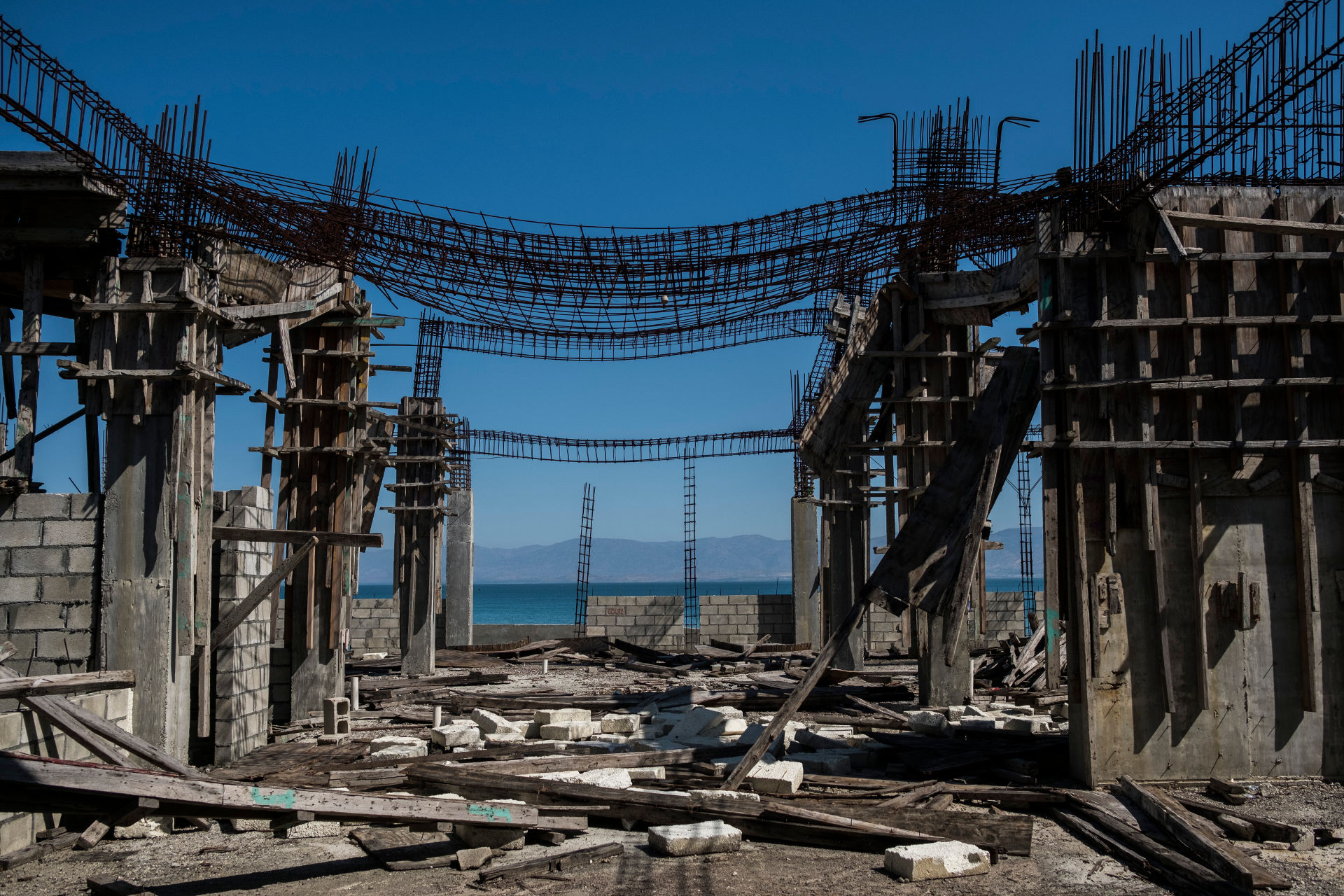
More than six years ago they demolished the old market to build a new one that is still under construction / DENNIS RIVERA, DIARIO LIBRE REPÚBLICA DOMINICANA
Brea González is not unknown in the Dominican Republic: He owns over 30 companies including cemeteries, food import, media, and umbilical cord storage. In Panama he leads nine more companies including construction, fuel manufacturing, and medical equipment. The company has not gone unnoticed in the isthmus due to alleged payoffs to Panamanian former president, Ricardo Martinelli (currently imprisoned in his country) through an IBT Group director who was close to the Central American president.
Another company under Senate audit magnifying glass was Grupo de Ingeniería Estrella. According to the report, infrastructure was granted despite not having the minimum requirements. Investigators also detected that execution progress of the 19 contracts granted were at a physical rhythm that did not correspond to money disbursements. The company was also questions for Gonaïves town urban renovation where each road kilometer costed 1.23 million dollars while for another company with a similar project, the cost was 995,254 dollars.
Brea González was contacted for this report, but he never answered, just like senator Bautista or Grupo de Ingeniería Estrella spokespeople.
The Presidential Lighting
Haitian streets are lit every evening amid tin cans full of coal to serve as lamps for informal peddlers who work along sidewalks. A plan to launch solar energy lamps was designed in the framework of Petrocaribe to revert the country from darkness prevailing in Haiti. Senate, in its 2017 report, discovered a pattern in every contract. Solar lamps installed starting 2012 were bought from companies that sold them overpriced, one of them owned by current Haiti President, Jovenel Moïse. In January 2013, the Haitian mandatary, who was not back then in the political arena yet, where he got from Martelly’s hand, signed a contract to install 65 solar lamps in Savanette and Mont-Organisé districts, representing Compañía Haitiana de Energía S.A. (Comphener S.A.) which he had helped founding five years ago, according to the investigation.
It was a 116,058-dollar (4.95 million Haitian gourdes) contract, that was executed within a day but at a very high cost; each lamp cost 76,144 Haitian gourdes, a 105.3 % overprice vs the lamp normal price.
The contract granted to Moïse, who did not have the requirements demanded by the authorities, is just a drop of water amid the 12 companies that installed 7,499 solar lamps overpriced between 100% and about 400% in some cases, according to the auditors. Along Comphener S.A., other companies like Burocad, GPL Solar LLC, Enstrap, Suntech Solar Haití, Esolar Haití, Maxitech S.A., Green Solar Specialist, GK Import Export S.A., Elmacen S.A., and Besuc S.A. received irregular authorizations and charged for overpriced lamps, according to the parliament report. The Haitian State through cooperation funds allocated for public lighting about 3.14 million dollars and “none works well” said senator Nenel Cassy, member of the parliament commission that in 2017 audited the resources.
From a temporary small parliament office built almost nine years ago, Cassy reported to #Petrofraude journalists that the lamp case is what has kept the Venezuelan cooperation fund investigation without legal results. After the report release date, November 2017, two months went by until the document was taken to the Senate plenary and, although the hope of the investigation commission was to hand over the case to the legal system, parliament majority kept in Senate by President Moïse had the initiative and the 656-page document was sent back to the Accounts Chamber, where it is even today.
“There are 40 ministers and general directors of state bodies involved in Petrocaribe resource corrupt management”, stated the senator who pointed out that one of the most serios problems in Haiti is the lack of separation among public branches. “This is a difficult case because the name of the president in mentioned in the report”, he concluded. Moïse has never spoken about this issue, but in October 2018 promised to open an investigation on the Venezuelan cooperation. We wrote the Haiti Ministry Council Secretary, requesting the presidential version, but there was no answer.
Due to this stumbling block, there is a new way: Civil suits. In late August, 63 legal suits had been filed before the Instruction Court by citizens who seek an answer and punishment for those responsible. One of the attorneys who represents the cases, André Michel, stated that Petrocaribe in Haiti was not only squandering, but the money was deliberately used to buy assets overseas. “The money has been stolen but no one knows where it is”.
The Stadiums of the President’s Son
Part of the reconstruction money was allocated to leisure park and plaza projects that would not solve the emergency of the million and a half homeless Haitians due to the 2010 earthquake. In charge of all these projects was Olivier Martelly, the son of the Haitian former president, also known as Big O singer. The execution of the sports stadiums was full of irregularities according to parliament audits. A total of 25.6 million dollars were used for the construction of 14 soccer stadiums by two companies, mainly: Secosa and J&J Construction; none of the facilities has been concluded. When the contracts were authorized in 2011, J&J Construction did not even exist because it had been dissolved in September 2010 by its partners, according to the parliament investigation. It did not stop the disbursement of resources to this company that operated as sports fields construction company and school supervisor of schools built by Secosa. Both companies were contacted by e-mail to get their version of the facts, to no avail. For Senate, these contracts represented “favors and clientelism”, including over-invoicing, according to the parliament report. Former president Martelly, who is also a singer, has questioned accusations against him even ridiculing them. In a 2018 presentation, jokingly he said he had embezzled the money to invest in private hotel chains in Haiti. The scandal afterwards made him apologize in writing in September, stating it had been a joke in a performance and to highlight transparency importance. Big O production company to get comments on Martelly’s son to no avail.
Senator Cassy regretted the lack of will not only to investigate corruption but also to leave Haiti without the development those billions loaned by Venezuela had meant for the country. “No government after Petrocaribe wanted to develop productive plans for the country to grow. They rather allocated all the money to ghost projects”, he stated.
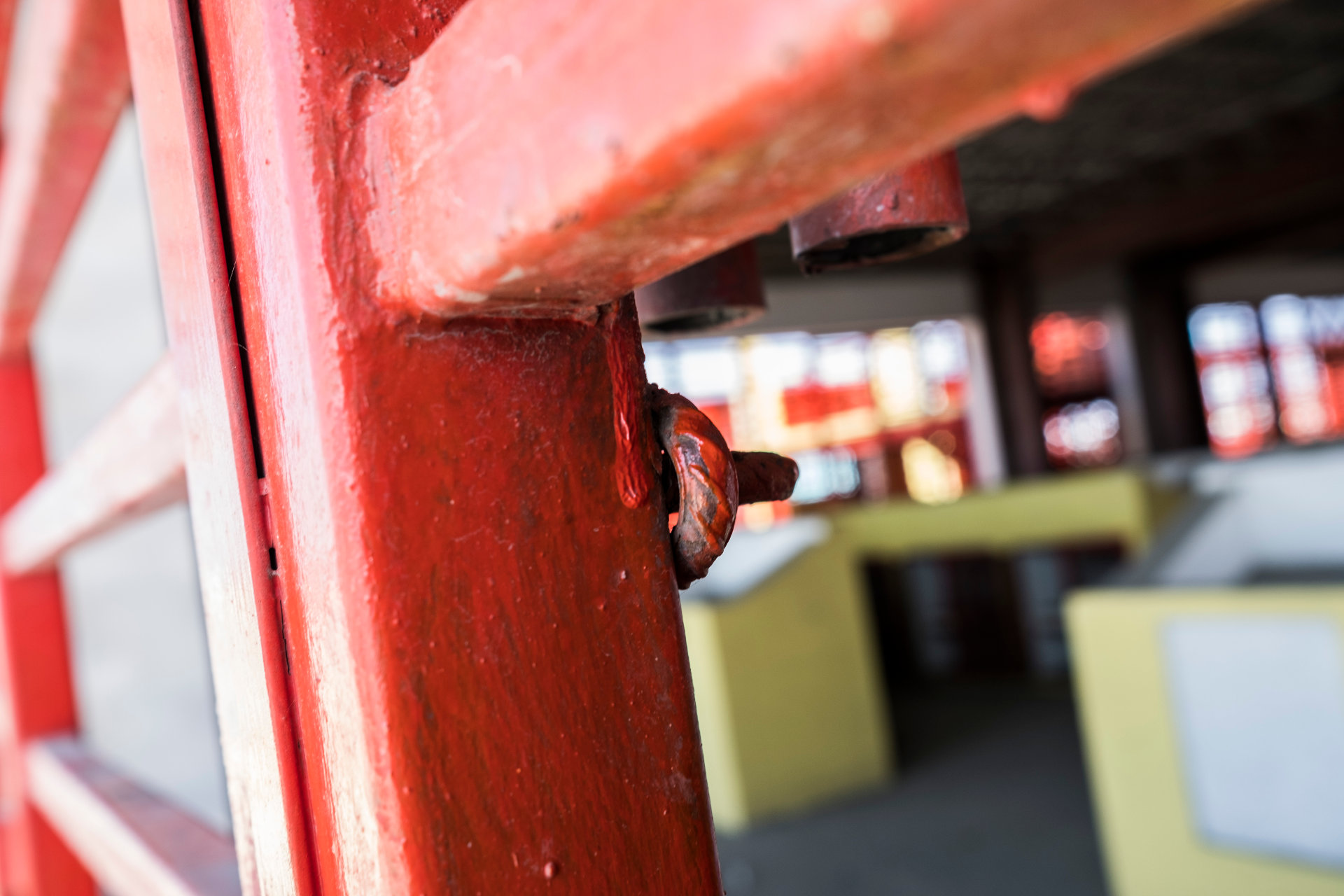
Jeremie's Wharf market has spent months with its doors closed, while merchants continue to sell on the streets / DENNIS RIVERA, DIARIO LIBRE REPÚBLICA DOMINICANA
The fund drama has also paradoxical expressions, like the plans that were completed but do not work. By one of the poorest areas in Port au Prince, Wharf de Jeremie was built; it is a community development meant for the excluded population that lives in Cité Soleil, a huge poor neighborhood in Haiti’s capital full of wood and zinc shacks covered with sailcloth because roofs have caved in due to rust. The complex has a huge vocational training school that started operations last February and a market that could be used for informal peddlers who sell on nearby sidewalks, but it has padlocks on its doors. “It bothers me because it is well done, but cannot be used”, said Josy Philistein, who lives there. It was built by Sotech.
Just behind the complex there is a school called Mixte Maison Institution a small school with three tiny classrooms that at a given time had no students but was used as a trash dump and bodies day-to-day violence leaves behind. From the inside, you can feel the stink from the clogged drain next to it that empties out into the sea; just one of many throughout Port au Prince. The school Director, Ronald Jean Marie, who also leads a social organization called Cité Soleil, told #Petrofraude journalists that in those tiny classrooms he provides school and extra-school activities to 300 students. He does not know where to go to use the 20-million-dollar new facilities next door that were built thanks to the Venezuelan funds.
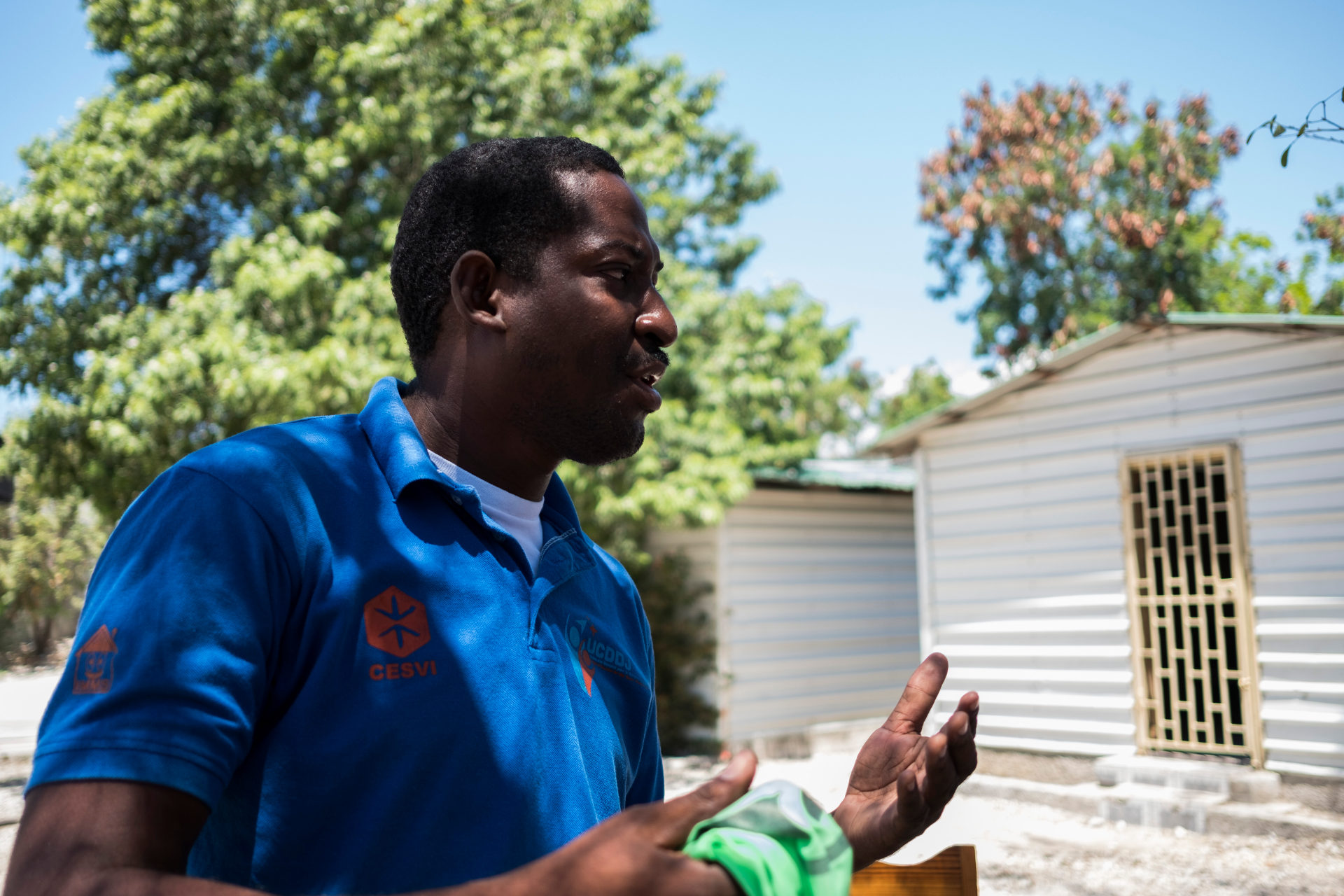
Ronald Jean Marie runs a small school that receives 300 children, although next door there is a huge center that cost US $ 20 million / DENNIS RIVERA, DIARIO LIBRE REPÚBLICA DOMINICANA
The same story goes for schools, hospitals, markets, and other facilities that in some cases were completed, but Haitian citizens does not know how to benefit form.
In the meantime, near Port au Prince airport, there is a seven-meter tall statue of Hugo Chávez in a square named after him in the Haitian capital, built with Petrocaribe money, as well. The sculpture is fenced in by 17 nude flagpoles. There is just one tarnished Haitian flag, slightly raggedy, waved by the warm breeze. The image is very distant from the protocol event almost three years ago with the flags of all Petrocaribe members and a high Venezuelan government commission for the inauguration.
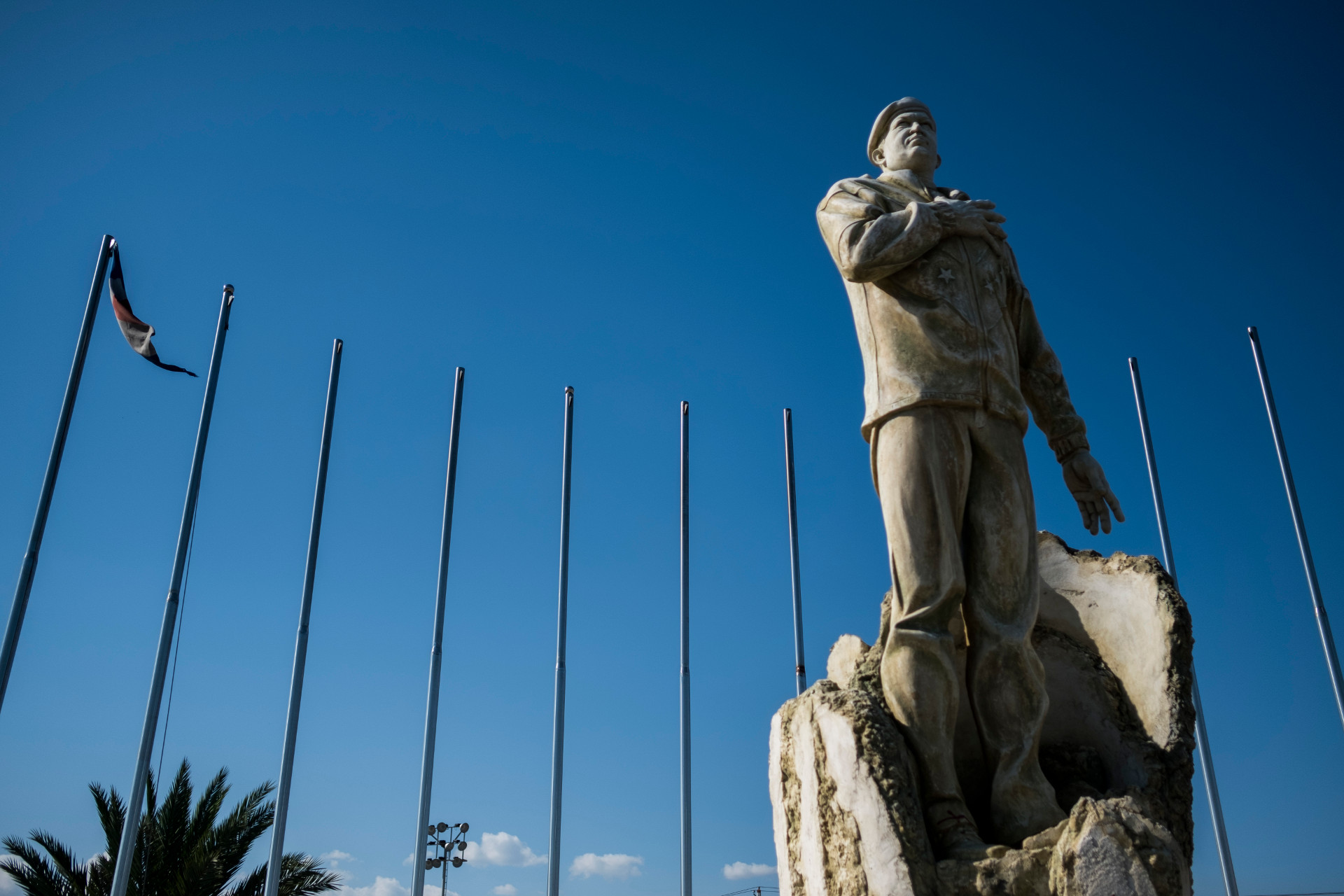
The Venezuelan authorities have insisted that the use of Petrocaribe resources in Haiti was correct / DENNIS RIVERA, DIARIO LIBRE REPÚBLICA DOMINICANA
Today, around the statue of the former Venezuelan president, a group of kids, despite the strong Port au Prince sun, run chasing a soccer ball while others take pictures. They are a community organization called National Awareness for a New Haiti (CONNA-H) and, in the background the sounds of “Mwen fè yon rèv” (“I have a dream”, in Haitian creole), can be heard, a song recently recorded that talks about Haiti leaving disaster behind. The scene is less than a kilometer away from the field where eight years ago the Red Cross built a temporary shelter to house disabled people after the earthquake.
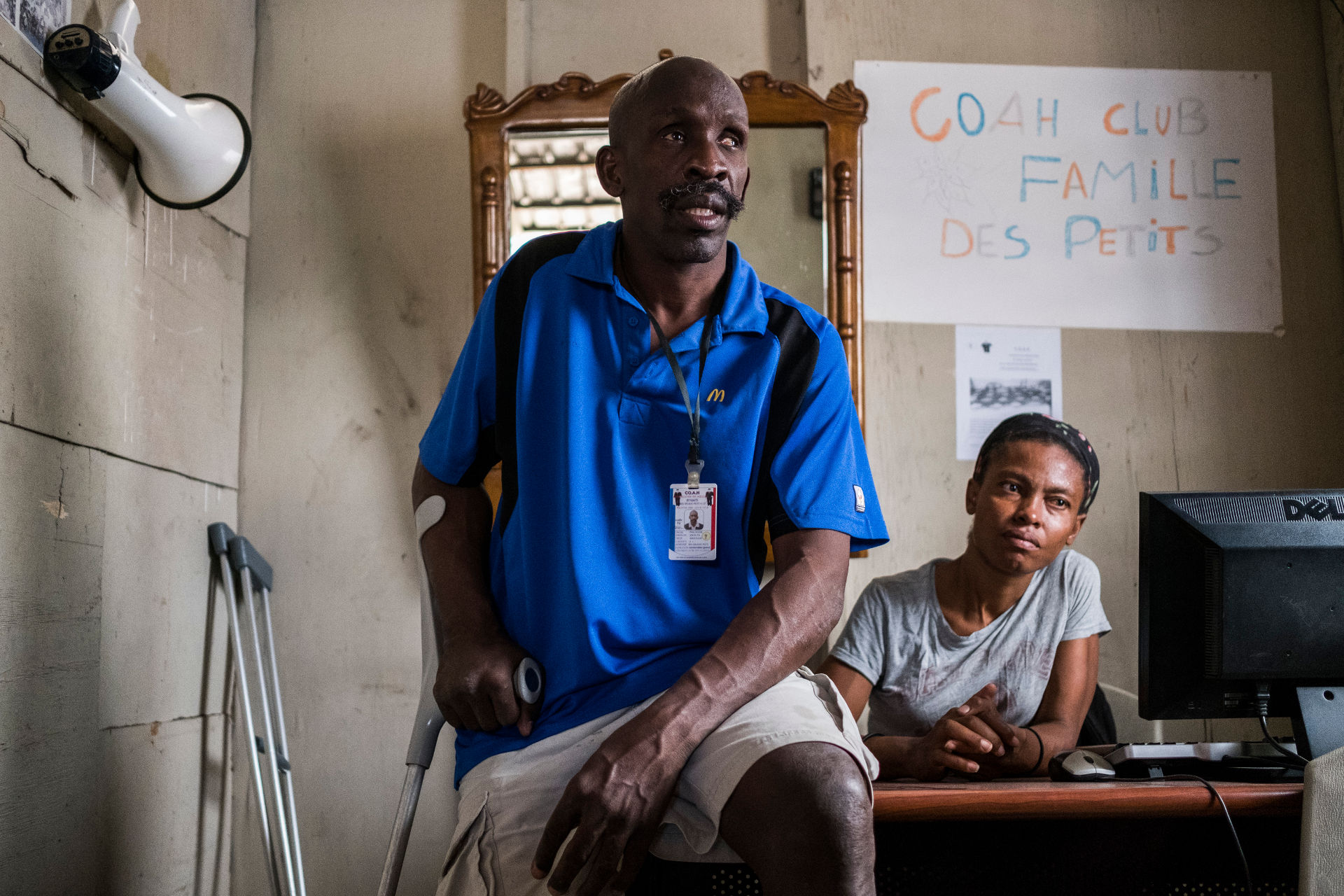
"We are victims of corruption," says Philogene Jocelyn from one of the shelters that are still there since the earthquake / DENNIS RIVERA, DIARIO LIBRE REPÚBLICA DOMINICANA
They are still there, homeless and staying in part of the same lot the huge Bowenfield residential project was supposed to be built but is just an ethereal idea. “There used to be a sign that announced a great construction project and then they took it off; that was the end of the story. We are victims of corruption because what was meant to be built, has not”, regretted Philogene Jocelyn, a blind man who has lived in the shelter for eight years, leaning on his cane that helps him walk along those dusty streets that are a metaphor of a failed cooperation.

